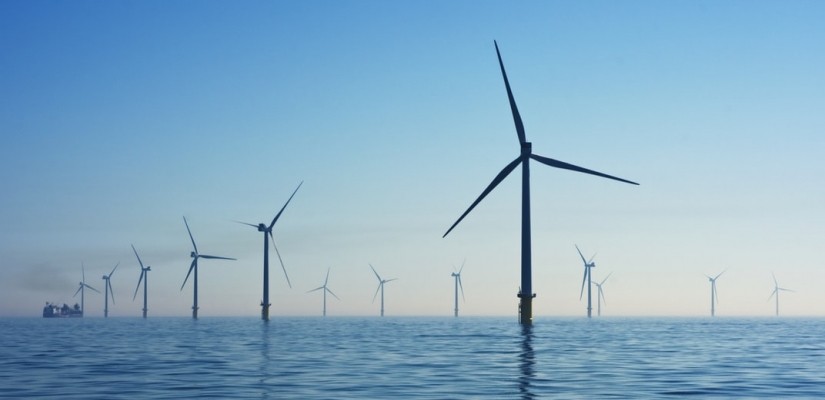In a world facing an ever-increasing demand for energy and a rising sense of urgency around environmental concerns, a growing number of countries are turning to offshore wind energy to address these challenges. While offshore wind energy presents substantial opportunities, this method of energy generation also presents several risks.
What is offshore wind energy and why does it matter?
Like traditional land-based wind farms, offshore wind turbines capitalize on wind as a source of energy. Offshore wind farms, however, are constructed in bodies of water, typically in the ocean on a continental shelf or in shallow waters – 40 to 50 meters deep. New technologies, such as floating wind turbines, will allow offshore wind farms to operate farther off coastlines, capitalizing on higher wind speeds. Offshore wind farms use undersea cables to transmit electricity to the grid and supply large amounts of renewable energy to coastal cities.
Although a relatively new development, offshore wind energy has transformed into a potential $1 trillion industry. While wind energy only accounted for 0.3% of global electricity generation in 2019, the global offshore wind market grew nearly 30% each year between 2010 and 2018 and is expected to increase 15-fold by 2040, according to the International Energy Agency (IEA). This means that by 2040, offshore wind energy is set to match capital spending on gas- and coal-fired capacities.
European countries, such as the United Kingdom, Germany, and Denmark, are particularly interested in further developing wind energy potential. The North Sea’s strong winds and shallow waters provide an ideal location for wind turbine placement. Furthermore, through more environmentally friendly policies, offshore wind capacity in the European Union reached nearly 20 gigawatts (GW) in 2018 and is expected to reach 70 GW by 2040.
China is also rapidly investing in offshore wind energy. In 2018, China added 1.6 GW of offshore wind capacity, more than any other country that year. Several other countries, including Canada, Japan, Taiwan, South Korea, India, and the United States, are also investing in offshore wind. With potential offshore wind turbine placements along the coasts and in the great lakes, the U.S. could generate an estimated 2,000 GW or 7,200 terawatt-hours (TWh) of energy per year, nearly twice the country’s current energy consumption rate. The U.S. however, lags behind Europe, having only established its first offshore wind farm in 2016.
Perhaps one key reason behind the boom in investment is that offshore wind has not yet come close to its full potential. According to estimates from the IEA, offshore wind has the potential to generate 420,000 TWh per year worldwide, which is over 18 times the global electricity demand in 2019.

Opportunities
The benefits of offshore wind energy are already quite apparent. Offshore wind energy is abundant and more consistent than land-based wind energy. Offshore wind turbines provide a clean renewable source of energy while capitalizing on more consistent wind streams at faster speeds that exponentially increase energy production. Even small increases in wind speed yield large increases in energy production. Furthermore, coastal areas typically have higher population densities and therefore higher energy demands. This growing industry is also creating new jobs and simultaneously reducing CO2 emissions. By offering alternatives to less environmentally friendly energy sources, offshore wind could prevent the generation of 5-7 billion tonnes of CO2 emissions globally. The cost of erecting offshore wind turbines has also dropped dramatically by 46% from 2012 to 2017, further increasing the attractiveness of offshore wind to investors.
Risks
While the benefits of offshore wind energy may seem clear, this method is not without its risks. Offshore wind farms face a variety of risks including weather conditions, maintenance costs, innovation challenges, environmental factors, political considerations, and residential complaints.
- Weather: A common question regarding the sustainability of offshore wind farms is their resilience to severe weather or, more specifically, to hurricanes. More modern turbines are designed to withstand wind speeds of over 70 meters per second (m/s) or roughly 140 knots. Additionally, these turbines are designed to turn off when wind speeds reach 50 m/s, which raises the inference that the turbines do not continue to generate energy at such wind speeds. Ultimately, offshore wind farms are subject to harsher weather conditions and effects of climate change, yet technological advancements are improving the resiliency of turbines to extreme weather.
- Maintenance: Offshore wind turbines have higher maintenance costs than on-land wind turbines due to less accessibility and corrosion from seawater. Cable failure is also a common concern, resulting in lapses in power generation. Cable failures are often rooted in cost-cutting efforts made during installation or poor designs incapable of enduring the harsher conditions. Cable failures require quick response times to ensure continued power flow.
- Innovation: Given that the first offshore wind farms were placed in shallower locations, newer placements will need to be in deeper waters, which creates technical challenges. The future of offshore wind energy may depend on the development of floating wind turbines that can withstand harsh conditions.
- Environmental: The effects of offshore wind farms on marine and avian life are still largely unknown, however, it is possible that wind turbines could disrupt wildlife or migratory patterns.
- Political & Residential: Perhaps the biggest risk to this growing industry is the need for policies with greater foresight that can properly regulate this fast-evolving market. Furthermore, wind turbines can be a source of “aesthetic pollution” becoming unpopular among local residents and negatively affecting tourism or property values.
Conclusion
In summary, offshore wind energy represents an incredible opportunity of relatively untapped potential to meet growing energy needs via a renewable energy source. Nonetheless, we should not let the desire to quickly produce offshore wind turbines transcend the obligation to first evaluate the associated risks.
